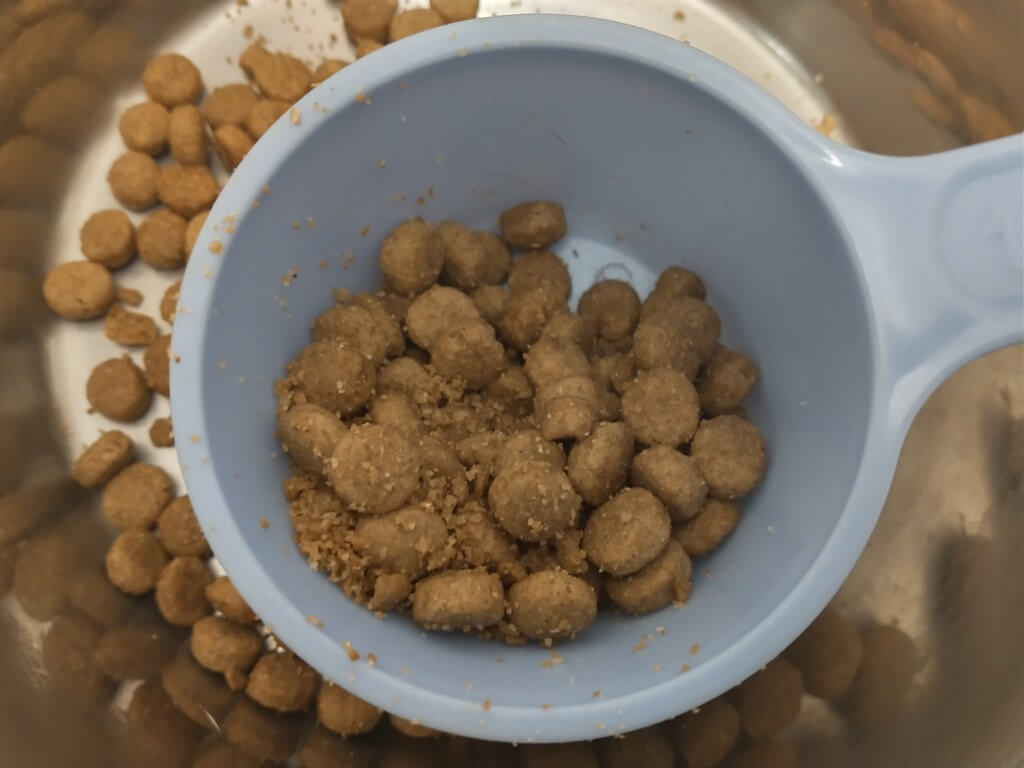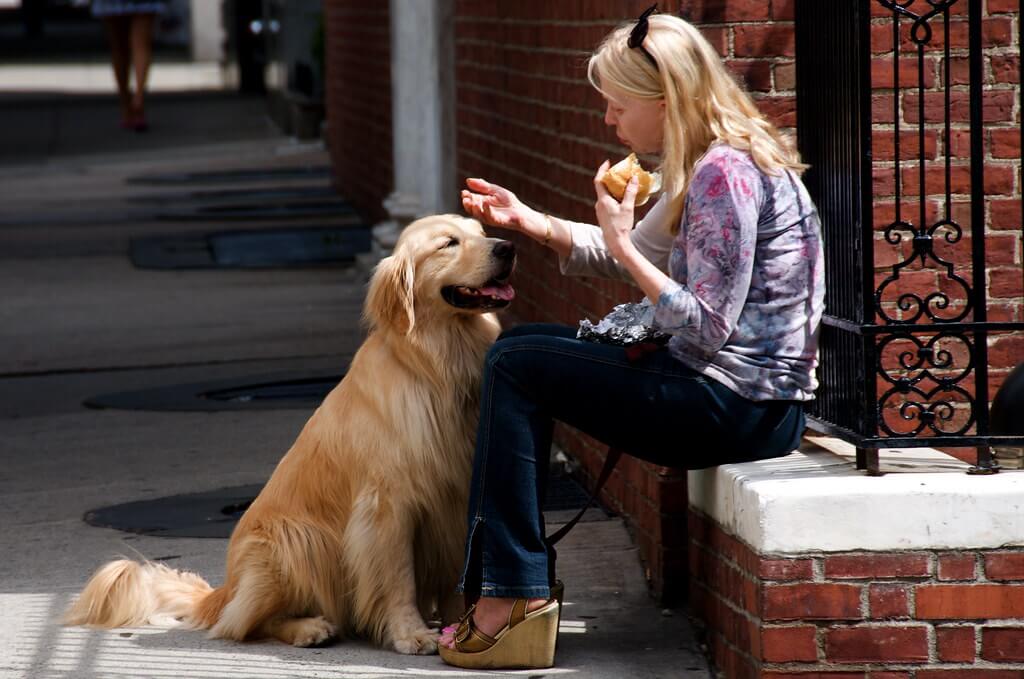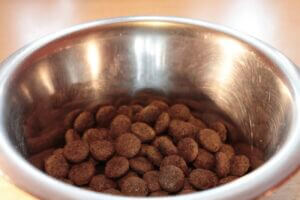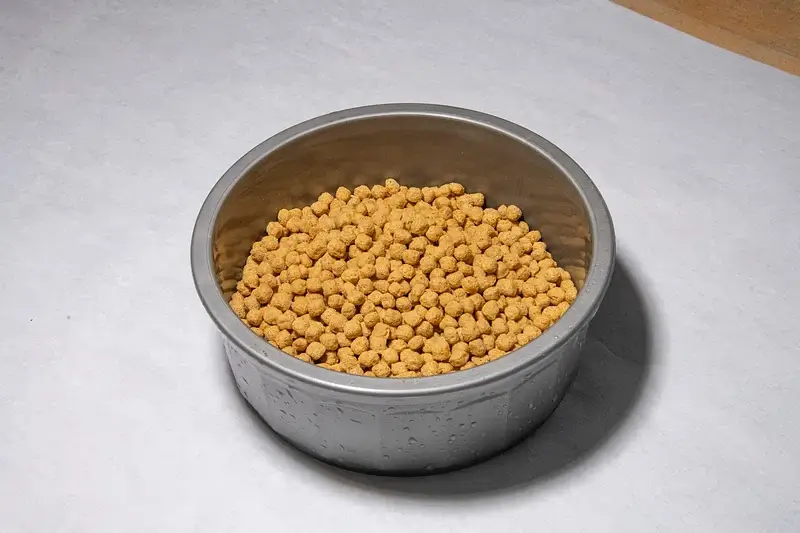How to Get My Dog to Eat Dry Food
Many pet owners find it challenging to feed dry food to their dogs. There are several common reasons for refusal, including flavour preferences, texture issues, and sometimes even health problems like dental issues or digestive discomfort. To find workable solutions, it is essential to comprehend these variables. A balanced diet is critical to the general well-being of your dog. Dry food, or kibble, often provides the necessary nutrients in a convenient form, but convincing your dog to eat it can sometimes be a struggle. This manual will examine numerous methods to assist your dog’s transition to dry food.
We will discuss how to enhance the flavour of dry food by adding safe and tasty mix-ins or moistening the kibble. Additionally, we’ll cover behavioural strategies such as creating a positive feeding environment and establishing a regular feeding routine. You’ll also find tips on using positive Reinforcement and interactive toys to make mealtime more appealing.
By the end of this article, you will have a comprehensive understanding of how to get your dog to eat dry food, ensure a balanced diet, and enjoy its meals.
Understanding Your Dog’s Eating Habits

To successfully learn How to Get My Dog to Eat Dry Food, it’s important to understand your dog’s eating habits. By identifying your dog’s preferences and any health issues, you can make dry food more appealing and suitable for them.
Identifying Your Dog’s Preferences is the first step. Pay attention to the flavours, textures, and temperatures your dog prefers. Some dogs may enjoy chicken-flavoured kibble over beef, or they might prefer softer pieces over hard, crunchy ones. The temperature of the food can also make a difference; some dogs might like their food slightly warmed.
Health Issues That May Affect Appetite should also be considered. Dental problems are a common issue that can make eating dry food painful. If your dog has gum disease or broken teeth, they may avoid dry food altogether. Proper oral hygiene and routine dental examinations can be beneficial to alleviate this problem and make dry food a viable option.
Digestive issues can also impact your dog’s willingness to eat dry food. Dogs who have gastrointestinal problems or dietary allergies may refuse certain types of kibble. It’s important to consult with a veterinarian to identify any digestive issues and find a suitable diet for your dog.
Understanding these aspects of your dog’s eating habits will enable you to modify your strategy successfully and figure out how to Get Your Dog to Eat Dry Food.
How to Transition Your Dog to Dry Food
Learning how to Get My Dog to Eat Dry Food involves a careful and patient approach. Here are some effective strategies for successfully transitioning your dog to dry food.
Gradual Transition Process is key to making the switch smoother. A sudden diet change may cause an upset stomach in your dog, so it’s important to transition gradually.
Mixing dry food with wet food can make the new diet more palatable. To begin, add a tiny quantity of dry food to your dog’s regular damp food. This way, your dog gets used to the texture and taste of dry food without rejecting it outright.
The next step is to increase the dry food ratio over time. Increase the quantity of dry food gradually while reducing the amount of wet food from one to two weeks. This slow transition helps your dog adapt to the new diet without any digestive issues.
Patience and Consistency are crucial throughout this process. Dogs can be stubborn or hesitant about change, so it’s important to remain patient and consistent.
The importance of a consistent feeding schedule cannot be overstated. Feed your dog at the same times each day to establish a routine. Consistency helps your dog know when to expect food, making them more likely to accept the new diet.
By following these steps, you’ll be well on your way to understanding How to Get My Dog to Eat Dry Food.
Making Dry Food More Appealing

Understanding How to Get My Dog to Eat Dry Food involves making the food more appealing to your dog’s senses. Here are some tips to enhance the flavour and texture of dry food, making it more enticing.
Enhancing the Flavor of Dry Food is a great way to start. One effective method is adding warm water or broth to the dry food. This not only softens the kibble but also releases aromas that can make the food more tempting. Ensure the broth is low-sodium and free from harmful ingredients like onions and garlic.
Mixing with a small amount of wet food can also help. Combining wet and dry food creates a more appealing texture and flavour. Start with a tiny portion of moist food and progressively reduce it as your dog becomes more accustomed to the dry food.
Using Food Toppings and Mix-ins provides additional flavour and nutrition. Many safe and healthy options are available, such as plain cooked chicken, pumpkin puree, or even a bit of yoghurt. These additions can make dry food more exciting and tasty.
Warming Up Dry Food is another technique to improve its smell and taste. Use the microwave to gently reheat the dry meal for a few seconds (make sure it’s not too hot) to release its aromas and enhance its appeal. Warm food can be more enticing, especially for picky eaters.
By following these strategies, you can effectively learn How to Induce Dry Food Eating in My Dog and ensure they enjoy their meals while receiving the necessary nutrients.
Behavioural Strategies to Encourage Eating
Implementing effective behavioural strategies is key to learning How to Feed dry Food to My Dog. Creating a positive feeding environment and establishing a consistent routine can significantly improve your dog’s eating habits.
Creating a Positive Feeding Environment is crucial. Make sure your dog eats in quiet and distraction-free areas. A calm environment helps your dog focus on eating without being disturbed by noise, other pets, or people. Mealtimes can become more pleasurable and less stressful as a result.
Establishing a Routine is another important strategy. Regular feeding times help your dog understand when to expect food, which can create a sense of stability and predictability. Feed your dog at the same times each day to develop a consistent routine. This can encourage them to eat when the food is offered, as they know it’s mealtime.
Avoiding free feeding is essential. Free feeding entails putting food out for your dog to eat all day and graze on whenever they want. This can lead to overeating or a lack of interest in food during designated mealtimes. Instead, offer food at specific times and remove any uneaten food after about 20 minutes. This approach helps your dog associate mealtimes with eating and can increase their willingness to eat dry food.
By following these behavioural strategies, you can effectively learn How to Get My Dog to Eat Dry Food and create a more structured and enjoyable feeding routine for your pet.
Health and Nutrition Considerations

Ensuring the Dry Food Is Nutritionally Balanced
When selecting dry dog food, it is critical to vital to ensure it provides a balanced diet. Seek for goods that adhere to the dietary recommendations established by recognized authorities, such as the Association of American Feed Control Officials (AAFCO). A balanced diet includes the appropriate proportions of the vitamins, minerals, lipids, proteins, and carbs needed for your dog’s overall health.
Checking for quality ingredients
Quality ingredients play a significant role in your dog’s nutrition. Choose dry food that lists meat, fish, or poultry as the first ingredient. Avoid products with fillers like corn, soy, or wheat, and be cautious about artificial additives and preservatives. High-quality ingredients will support your dog’s digestion and overall well-being.
Consulting with a veterinarian
Prior to altering your dog’s diet in any way, it’s wise to consult with a veterinarian. A veterinarian can offer tailored advice depending on the breed, age, and condition of your dog, activity level, and any health concerns. This professional advice ensures your dog receives the most suitable nutrition.
Managing Food Allergies and Sensitivities
Managing dietary sensitivity and allergies can be challenging. Symptoms may include itching, gastrointestinal issues, or ear infections. Identifying the cause and managing it effectively is crucial. Be mindful of your dog’s reactions to their diet, and eliminate any problematic ingredients.
Identifying potential allergens
Among the common allergies in dog food include dairy, wheat, chicken, beef, and eggs. Pay attention to ingredient labels and monitor your dog for symptoms of allergies. Eliminating potential allergens can prevent discomfort and health issues.
Choosing hypoallergenic formulas
For dogs with sensitivities or allergies, hypoallergenic formulas can be a suitable option. These foods are made with limited ingredients and use novel protein sources like duck or venison, which are less likely to cause reactions. Hypoallergenic
Training Techniques to Get Your Dog to Eat Dry Food
Training your dog to eat dry food can be approached with positive Reinforcement and interactive methods to make mealtime enjoyable. Here are effective techniques to encourage your dog to eat dry food.
Positive Reinforcement is key to training. Giving your dog praise and biscuits as a reward when it eats dry food encourages it to associate it with positive experiences. Offer small, tasty treats or verbal praise immediately after it eats dry food to reinforce this behaviour.
Using Puzzle Feeders and Interactive Toys can make mealtime fun and engaging. These devices require your dog to work for its food, stimulating its mind and keeping it entertained. Puzzle feeders dispense dry food piece by piece as your dog interacts with them, making eating a rewarding challenge.
Making mealtime fun and stimulating is important. Incorporate activities like hide-and-seek games with dry food treats hidden around the house or in toys. This adds excitement to mealtime and encourages your dog to seek out and enjoy their food actively.
By implementing these training techniques, you can effectively teach your dog to enjoy dry food and see mealtime as a positive and engaging experience. These methods help reinforce good eating habits and promote overall enjoyment of their diet.
Troubleshooting Common Issues
Dealing with a Stubborn Eater
If your dog is a stubborn eater, it can be a challenge to transition to dry food. First, ensure that no medical issues are causing the reluctance to eat. If your dog is healthy, try introducing dry food slowly. Mix a small amount of dry food with their present diet and raise the proportion progressively over a week. Adding a little amount of low-sodium broth or warm water can make the dry food more enticing. Be patient and consistent with meal times, and avoid offering too many treats between meals.
Strategies for Picky Eaters
Picky eaters can sometimes be encouraged by changing the texture or flavour of the dry food. Try different brands or flavours to find one your dog prefers. You can also enrich the dry food by mixing in a small amount of wet food or adding a topper like cooked vegetables or lean meats. Avoid constantly changing food types, as it can create an overly selective eater. Instead, stick to a routine and offer positive Reinforcement when your dog eats dry food.
Monitoring Your Dog’s Weight and Health
Regularly monitoring your dog’s weight and overall health is essential when changing its diet. Use a monthly check-in to track their weight and take note of any modifications to their digestion, coat quality, and energy levels. See your veterinarian to modify your diet if you observe any noticeable weight increase or decrease. Consistent weight and vibrant health indicators suggest that your dog is getting the right nutrition.
Ensuring Proper Nutrition and Caloric Intake
Refer to the feeding guidelines on the dry food packaging to ensure your :
- Receives proper nutrition and the right caloric intake.
- Measure portions accurately using a measuring cup.
- Remember that caloric needs vary based on your dog’s age, size, and activity level.
Engage in regular exercise and activities to keep your dog fit and healthy. Adjust their food intake as needed to maintain an optimal weight. If you’re unsure about the appropriate amount to feed, seek advice from your veterinarian.
When to Seek Professional Help

Consulting a Veterinarian
If your dog consistently refuses to eat dry food despite various attempts, it is a good idea to consult a veterinarian. A veterinarian can examine you for any hidden medical issues that might be affecting your dog’s appetite or ability to eat. Health concerns, including digestive ailments, dental troubles, or other medical conditions, could be the cause of your dog’s reluctance to eat.
Assessing Underlying Health Issues
In the consultation, the veterinarian will carry out a thorough examination to assess underlying health issues. This assessment might include blood tests, physical exams, and possibly diagnostic imaging to identify any possible medical causes for your dog’s eating behaviour. Recognizing the underlying reason is essential to creating an efficient strategy for improving your dog’s eating habits.
Working with a Professional Dog Trainer
If health issues are ruled out, consider working with a professional dog trainer. Trainers specialize in addressing behavioural problems and can offer tailored advice on encouraging your dog to eat dry food. They can also help establish better feeding routines and practices that make mealtime a positive experience.
Behavioural Modification Techniques
Professional dog trainers often use behavioural modification techniques to address specific issues. These techniques can include desensitization, counter-conditioning, and establishing consistent routines to help your dog become more comfortable with dry food. By using positive Reinforcement and gradually acclimating your dog to their new diet, trainers can help make the transition smoother and more successful.
Understanding how to get my dog to eat dry food can sometimes require outside help, especially when facing stubborn or picky eaters. Following the guidance of vets and professional trainers ensures that your dog receives the necessary support and encouragement to enjoy a balanced diet.
Conclusion
In conclusion, learning How to Get My Dog to Eat Dry Food involves implementing effective strategies and maintaining patience throughout the process.
Recap of Key Strategies on How to Get My Dog to Eat Dry Food:
- Begin with a gradual transition process, mixing dry food with wet food and increasing the dry food ratio over time.
- Make dry food more appealing by enhancing its flavour, using food toppers, and warming it up.
- Establish a positive feeding environment, ensuring quiet and distraction-free areas and maintaining a consistent feeding schedule.
- Consider health and nutrition factors, ensuring the dry food is balanced and suitable for your dog’s needs.
- Use training techniques such as positive Reinforcement, using puzzle feeders, and making mealtime stimulating.
Encouraging Consistency and Patience is crucial throughout this journey. Dogs may take time to adjust to new foods and routines, so Consistency in approach and patience in waiting for results is key. With dedication and understanding, you can successfully transition your dog to enjoying dry food as part of their healthy diet.
By following these strategies and maintaining a positive attitude, you can help your dog develop a positive association with dry food and ensure it receives the nutrition it needs for a happy and healthy life.
How to Get my Dog to Eat Dry Food: FAQs
Should you add milk to dry dog food?
It’s generally not recommended to add milk to dry dog food as many dogs are lactose intolerant, which can lead to digestive issues.
For what duration is dry dog food soaked?
You can soak dry dog food in warm water or broth for about 10-15 minutes to soften it and make it easier for your dog to eat.
Is dry dog food harder to digest?
Dry dog food is usually not harder to digest if it is of good quality and appropriate for your dog’s diet, but some dogs may find wet food easier on their stomachs.
What dry food do dogs like best?
Preferences can vary, but many dogs enjoy dry foods with high-quality meat ingredients and natural flavours; try different brands to find the best one for your dog.
What do you feed a dog that won’t eat?
Consider mixing in wet food, adding toppings like lean meats or vegetables, or using broth to entice your dog. Always consult with your vet if the problem persists.
YOU MAY ALSO LIKE:
How to Keep Ants Out of Dog Food
How Much Does Dog Food Cost
How Long to Soak Dog Food
How Much Homemade Dog Food to Feed
How Much Wet Food to Feed a Dog
How to Transition Dog Food
How to Stop Food Aggression in Dogs Towards Other Dogs
How many cups of food should I feed my dog?
How to Stop Food Aggression in Dogs
How Many Cups in a Pound of Dog Food
How Long Does it Take a Dog to Digest Food
Why is My Dog Always Hungry
How Much Protein is in Dog Food?
How to Make Dog Food
how long to feed dog puppy food
What is The Cost to Make Homemade Dog Food?
How to Make Homemade Raw Dog Food
How to Make Homemade Dry Dog Food
How to Prepare Dog Food at Home for Senior Dogs
How to Train a Dog That is Not Food-Motivated
How Much Food Should I Feed
How To Store Dog Food
How Much Time Can a Dog Survive Without Consuming Water
How Long Can a Dog Survive Without Food?

